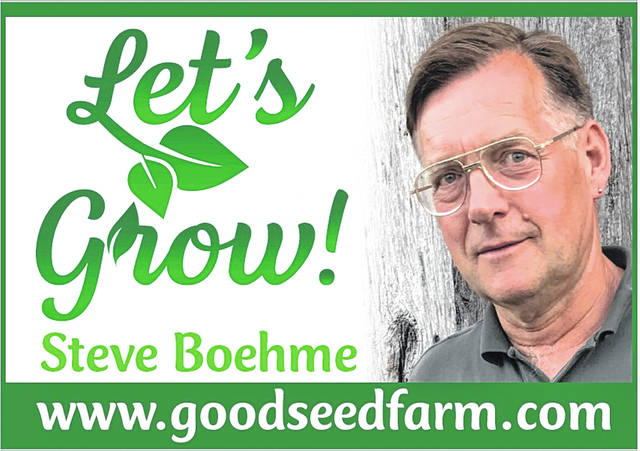
Planting a wildflower meadow is a favorite daydream among gardeners and nature lovers.
Just the words “wildflower meadow” summon a mental picture of colorful blooms waving in the wind, fluttering butterflies, and busy honeybees buzzing from bloom to bloom.
This daydream is always saturated with color all season long, inviting you to wade through a fragrant tide of waist-high flowers.
It’s a lovely picture, and it’s attainable, but perhaps not in the way you think it is.
The hard fact is that planting a field of wildflowers from seed is a very challenging process that takes years to accomplish.
It likely starts with killing off every living plant currently growing in the field, preventing millions of weed seeds from sprouting, and carefully controlling grasses and weeds for many years while your wildflowers struggle to get established.
The difference between a wildflower meadow and a weed patch can be hard for beginning gardeners to appreciate. At every turn, seed companies will try to sell you packets of “native wildflower seed mix”, but only a tiny percentage of these seeds will ever grow to maturity despite your best efforts.
Most wildflowers do best on poor soil, where undesirable weeds and perennial grasses choke them, starve them or shade them out before they even get a chance to bloom (which is usually not until the second year after they sprout from seed).
Because competition from undesirable grasses and weeds is your biggest challenge, eliminating existing vegetation is the first step to establishing a healthy wildflower population.
Crabgrass, thistle, nutgrass and bindweed are much better than native wildflowers at getting established on poor, compacted soils.
Sowing flower seeds on compacted soil dramatically reduces their chances, but experts advise against tilling, because it releases buried weed seeds that quickly overwhelm your new seedlings.
The vast majority of native wildflowers aren’t drought tolerant, particularly when they’re young.
Unless you water, or have frequent rainfall, only a fraction of the seeds you plant will reach adulthood. Chances are that only a few species of wildflowers will survive to a third year, or re-seed themselves successfully.
The bottom line is that establishing a wildflower meadow by buying and planting packets of seeds is an uphill battle. If you truly want a profusion of native wildflowers on your property, working in concert with nature is more likely to reward you.
We enjoy many acres of wildflower meadows on our farm, because it’s been decades since crops were grown on our fields.
Over the years we’ve learned, by trial and error, how to manage our pastureland as a nature preserve with a profusion of established native wildflowers.
We have never, ever planted a single wildflower seed. Instead we’ve focused on creating ideal conditions for the volunteer plants already there.
Our first step was to stop the practice of taking hay off the fields every summer.
Hay from this type of pastureland has little nutritional value as forage. Continually extracting hay depletes the soil and prevents the wildflowers from propagating. It also destroys bird, butterfly and beneficial insect habitat, for no real gain.
Instead, we began mowing once each year, in the dead of winter, after all the perennial wildflowers have a chance to drop their seeds. This practice has really increased our bird population, because so many of them depend on pastureland insects and seeds for food.
After years of this benign neglect, we’re seeing an explosion of wildflowers. From late winter until hard frost, every week brings a new color balance as the seasonal plants bloom and fade, only to be replaced by others. Each year the wildflower show gets more intense. It’s a kaleidoscope of color!
We’ve laced our fields with grassy trails, where weekly mowing encourages a dense carpet of turfgrass and clover. Every day we walk these trails and marvel at the constantly changing colorscape.
Like so many things in nature, the answer lies in changing your ideal of beauty. You may find the answer to your wildflower dreams was there all along.
Steve Boehme and his wife Marjorie own GoodSeed Farm Landscapes, a design-build landscape/hardscape installer specializing in outdoor living spaces. More information is available at www.goodseedfarm.com or call GoodSeed Farm & Garden at (937) 695-0350.


